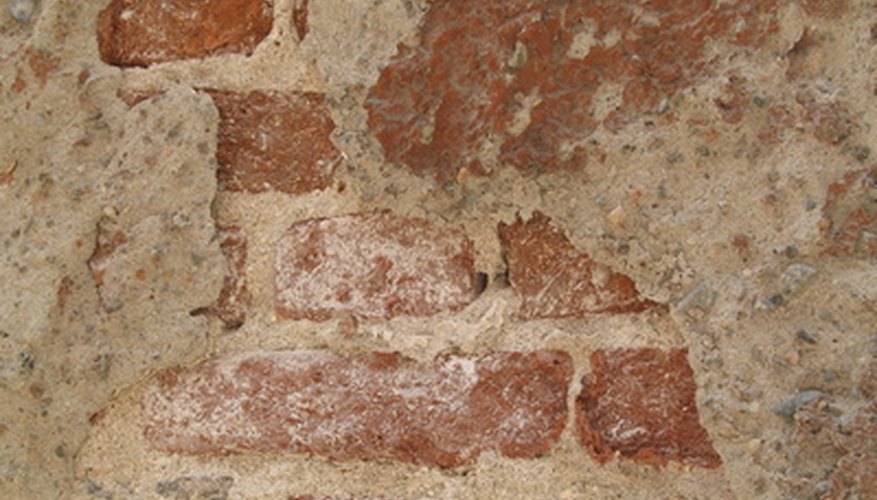Water causes salt deposits to leach through concrete or masonry walls and cement or lime based rendering. The white powder that comes to the surface is called efflorescence. Water from rain or garden sprinklers enters through the porous material and dissolves the salts in the mineral components. Alternatively, if there is no water barrier at the base of the wall, the water can be sucked up into the wall and rendering by osmosis. The salt can be in powder or crystalline form which is flaky. It is impossible to eradicate it totally, but certain applications can help prevent it.
Scrub the wall with detergent and a strong brush or a pressure washer to remove all traces of surface efflorescence. And then rinse thoroughly with fresh water. Do not do this on a rainy day or if rain is in the forecast. Allow the wall to dry completely inside and out after you wash it.
- Water causes salt deposits to leach through concrete or masonry walls and cement or lime based rendering.
- Scrub the wall with detergent and a strong brush or a pressure washer to remove all traces of surface efflorescence.
Scrub the dry wall with a wire brush to remove as much of the paint as you can. Some electric drills and angle grinders have wire brush attachments, which may make it easier to do this. If there is efflorescence, your paint is not waterproofing the wall.
- Scrub the dry wall with a wire brush to remove as much of the paint as you can.
Patch the rendering with a render mix if it has flaked or peeled off using a trowel to smooth it. Alternatively, fill in small cracks and holes with acrylic or silicone sealant. If it is badly damaged you may have to use a chisel and hammer to remove portions, and reapply them. The object is to make the rendering impermeable to water.
Apply muriatic acid to be sure you are getting rid of as much efflorescence as possible inside the porous rendering and the wall beneath it. Follow the manufacturer's recommendations on how to dilute the acid. Spray it onto the wall, taking care to use protective goggles, gloves, boots and clothing. Rinse thoroughly with water containing baking soda to neutralise the acid, or it will create more efflorescence. Allow to dry for a few days.
- Apply muriatic acid to be sure you are getting rid of as much efflorescence as possible inside the porous rendering and the wall beneath it.
Apply a primer or sealant especially designed to help prevent efflorescence. Use a product that is best suited to your local weather conditions. Some of these are tinted, but if you want the wall to be coloured, you will probably have to paint over the sealant.
